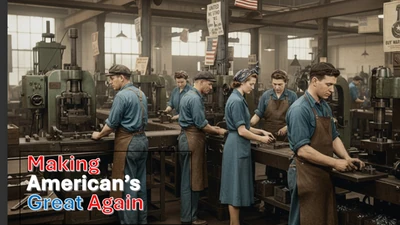I’m diving into the recent 90-day tariff pause between the U.S. and China, announced on May 12, 2025, and I’m excited to share my perspective as a conservative investor. With U.S. tariffs on Chinese goods dropping from 145% to 30%, and China’s tariffs on U.S. goods falling from 125% to 10%, this deal—negotiated by Treasury Secretary Scott Bessent and Trade Representative Jamieson Greer in Switzerland—feels like a breath of fresh air after a tense trade war. From my conservative viewpoint, this pause is a strategic move that opens up some solid investment opportunities, and I’m here to break down why it matters and how I plan to take advantage of it, all while sticking to my principles of financial discipline, risk management, and value-driven decisions.
Why I See Value in the 90-Day Tariff Pause
I’ve been keeping a close eye on the U.S.-China trade war, and let me tell you, it’s been a rollercoaster. The tariffs had climbed so high—145% on Chinese imports and 125% on U.S. exports—that global markets took a $6.6 trillion hit in early April 2025, with the S&P 500 dropping over 10% in just two days. That kind of volatility makes me uneasy, as I prefer steady, reliable growth over speculative swings. But this 90-day pause has brought some much-needed stability, and I see a few key benefits that align with my conservative outlook:
- Calming the Markets: When the initial tariff pause was hinted at in April, the S&P 500 jumped 9.52% on April 9, and Wall Street futures soared. The May 12 agreement has only added to that momentum. Analysts like Dan Ives from Wedbush are saying this move “takes a recession off the table for now,” and I’m inclined to agree. Stability like this gives me confidence to invest without worrying about a sudden market crash.
- Easing Inflation for Families: Those sky-high tariffs were costing U.S. households about $1,300 a year, according to the Tax Foundation, and that hits hard for folks like me who value preserving purchasing power. With tariffs now at 30%, prices on goods like toys, clothes, and electronics should come down, helping keep inflation—projected at 3.8% for 2025 by BlackRock—in check. That’s a win for my budget and my investments.
- Fixing Supply Chains: The trade war had companies canceling orders and leaving freight stranded, which worried me as an investor in logistics and retail. This pause lets businesses start importing again, especially for things like furniture and shoes, which means fewer shortages and less risk of bankruptcies for companies I might invest in.
- Keeping Leverage in Negotiations: I like that the U.S. is still holding a 30% tariff (including 20% tied to fentanyl issues) while China’s at 10%. It shows we’re not giving in completely, and Bessent’s talk of “bespoke” negotiations makes me think we’re playing hardball to address trade imbalances and fentanyl smuggling. That kind of accountability aligns with my conservative values.
- Boosting Global Confidence: This deal also sends a signal to allies like Japan and South Korea, who were hit with 10% tariffs, that the U.S. is willing to negotiate pragmatically. The World Trade Organization had warned that a full-blown trade war could slash U.S.-China trade by 80%—that’s $466 billion—so this pause helps avoid that nightmare scenario, which is a relief for my global investments.
What I’m Worried About
I’m not jumping in blindly, though. There are still risks that keep me up at night:
- Will the Talks Succeed? This 90-day window might not be enough to fix the deeper issues between the U.S. and China. If negotiations fall apart, we could be back to 145% tariffs, and that would tank the markets again.
- Remaining Costs: Even at 30%, tariffs still raise costs for U.S. importers, and China’s 10% tariff hurts our exporters, like soybean farmers and machinery companies I’ve been eyeing.
- Recession Odds: Pacific Investment Management says there’s a 50/50 chance of a U.S. recession, even with the pause, especially with 10-year Treasury yields at 4.45%. That’s a bit too close for comfort.
- Trump’s Unpredictability: I’ve followed President Trump’s tariff policies closely, and some experts call them “yo-yo tactics.” That unpredictability makes it hard to plan long-term, which I don’t love as a conservative who values consistency.
But I’m not letting those risks stop me. Instead, I’m using them to guide my strategy, focusing on opportunities that balance potential gains with my need for security.
How I’m Taking Advantage as an Investor
This tariff pause has created a window for me to make some smart moves, especially in sectors that benefit from trade de-escalation. Here’s my plan, rooted in my conservative approach of diversification, value, and caution:
1. Consumer Discretionary Stocks
I’m really excited about consumer discretionary stocks right now. Lower tariffs mean companies that import from China—like retailers and manufacturers—can save on costs and improve their margins. Analysts at Jefferies pointed me toward stocks like Five Below ($FIVE), Nike ($NKE), SharkNinja ($SN), and YETI ($YETI), which all jumped after the May 12 news. I’m leaning toward Nike because it’s a solid brand with a 1.44% dividend yield and a price-to-earnings ratio of 22 at $82 per share. I’ll probably allocate 10% of my portfolio here, keeping my exposure limited to avoid over-reliance on trade-sensitive sectors.
2. Tech Stocks (Thanks to Exemptions)
I was relieved to hear that smartphones, computers, and chips were exempted from the 125% tariffs back on April 11. That’s huge for companies like Apple ($AAPL), which rallied 15% on April 9, and the Nasdaq, which gained 12.2%. Wedbush’s Dan Ives thinks tech could hit new highs in 2025 if trade talks keep progressing, and I’m inclined to believe him. I’m looking at Apple, trading at $230 with a P/E of 35, since it’s diversifying production to India, reducing its China risk. But to play it safe, I might go with an ETF like the Technology Select Sector SPDR Fund ($XLK) to spread my risk. Tech will probably be 10-15% of my portfolio.
3. Logistics and Shipping Companies
With the pause, container bookings from China are starting up again, which is great for logistics companies. SEKO Logistics mentioned increased Southeast Asian bookings after the April pause, and I think China trade will follow. I’m looking at FedEx ($FDX) and UPS ($UPS), especially since UPS offers a 4.8% dividend yield at $135 per share with a P/E of 18. That’s a good value play for me, and I’ll allocate about 5% of my portfolio here for some steady income and trade exposure.
4. Agricultural Commodities
China’s tariff dropping to 10% is a big deal for U.S. agricultural exports, especially soybeans, which were worth $13.4 billion in 2024. I think this pause could boost demand, so I’m considering the Teucrium Soybean Fund ($SOYB) at $22 per share. It’s a good way to hedge inflation, but since commodities can be volatile, I’ll keep this to 5% of my portfolio.
5. Defensive Plays with Gold and Bonds
Even with the pause, I’m not ignoring the recession risk or the high 10-year Treasury yields at 4.45%. I’m putting 10% of my portfolio into defensive assets like gold, through the SPDR Gold Shares ETF ($GLD) at $220, and some short-term U.S. Treasuries. Gold’s a solid hedge against uncertainty, and Treasuries give me stability. I might also look at German bunds, yielding 2.54%, for some safe-haven diversification.
6. Alternative Funds
I read that BlackRock recommends active strategies like their Global Equity Market Neutral Fund, which gained 5% during the April 8 market dip. It uses long-short positions to manage volatility, which fits my conservative need for low-risk growth. I’ll put 5% of my portfolio here to diversify and protect against trade policy shifts.
My Conservative Approach to Investing
Here’s how I’m making sure my investments align with my conservative values:
- Research First: I’m using tools like Morningstar and Yahoo Finance to check fundamentals, focusing on companies with low debt and strong cash flow, like Nike’s debt-to-equity ratio of 0.6.
- Diversify: I’m spreading my money across tech, consumer stocks, logistics, commodities, and defensive assets so I’m not too exposed to any one sector.
- Manage Risk: I’m keeping trade-sensitive investments to 20-30% of my portfolio and setting stop-loss orders at 10% below my purchase price to limit losses.
- Tax Efficiency: I’m using my IRA—where I can contribute up to $7,000 this year, as I learned earlier—to hold these investments and maximize tax benefits.
- Stay Informed: I’ll be following trade talks on Reuters and CNBC, ready to shift to more defensive holdings if things go south.
- Get Advice: I’m working with a fiduciary financial advisor to make sure my portfolio fits my goals, especially for trickier moves like alternative funds.
Why This Fits My Conservative Values
As a conservative, I see this tariff pause as a pragmatic step that balances economic stability with the leverage needed to hold China accountable. It’s not about giving in—it’s about creating breathing room to negotiate better terms, which I respect. But I’m not throwing caution to the wind. I’m avoiding speculative stocks like Newsmax (NMAX), which I looked into earlier and found too risky with its $72 million loss and legal troubles. Instead, I’m focusing on companies with strong fundamentals, like Nike and Apple, and hedging with gold and bonds to protect my wealth. This approach lets me take advantage of the pause while staying true to my values of patience, diversification, and responsibility.
Wrapping Up
The 90-day tariff pause, bringing U.S. tariffs to 30% and China’s to 10%, has given me a chance to invest in a recovering market while keeping my risks in check. I’m targeting consumer discretionary stocks like Nike, tech names like Apple, logistics firms like UPS, agricultural ETFs like SOYB, and defensive assets like gold and Treasuries. By sticking to my conservative principles—research, diversification, and caution—I’m confident I can make the most of this opportunity without losing sleep over potential volatility. The next 90 days will be crucial, and I’ll be watching closely to see where this trade deal takes us.
Disclaimer: I’m not a financial adviser; please consult one. I’m just sharing my personal investment strategy.










